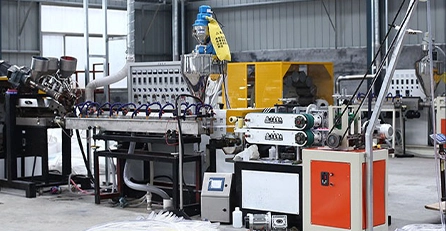vacuum pipes
Exploring the World of Vacuum Pipes Applications and Innovations
Vacuum pipes, often considered a niche technology, play a pivotal role in various industrial and scientific applications. These pipes are designed to transport materials or transfer energy in a low-pressure environment, significantly reducing the presence of gas molecules within the conduit. The unique properties of vacuum pipes allow for enhanced efficiency and precision in numerous fields, from pharmaceuticals to high-energy physics.
One of the most common applications of vacuum pipes is in the pharmaceutical industry. In this sector, maintaining sterility is crucial to ensure the efficacy and safety of medications. Vacuum pipes facilitate the transfer of sensitive materials, such as powders, liquids, and even gases, without the risk of contamination from airborne particles. This is achieved through the creation of a controlled vacuum environment that minimizes exposure to external factors. By using vacuum pipes, pharmaceutical manufacturers can improve product quality and compliance with stringent regulatory standards, ultimately protecting consumer health.
In the realm of research, vacuum pipes are indispensable in particle accelerators and other physics experiments
. These systems rely on vacuum environments to conduct high-speed experiments involving particles at subatomic levels. By eliminating air resistance and other atmospheric interferences, researchers can achieve more accurate results and better understand fundamental physical phenomena. Facilities like CERN and Fermilab utilize extensive vacuum pipe networks to maintain the required conditions for their experiments, enabling groundbreaking discoveries in particle physics.The engineering of vacuum pipes has also evolved significantly, driven by advancements in materials science and technology. Modern vacuum systems utilize advanced materials such as stainless steel, glass, and specialized plastics that can withstand the pressures and temperatures associated with vacuum conditions. These innovations have led to improved reliability and reduced costs, making vacuum systems accessible to a wider range of applications, including electronics manufacturing and food processing.
vacuum pipes

Another exciting area of development is the integration of vacuum technology in transportation systems. The concept of vacuum trains, popularized by visionary thinkers like Elon Musk, proposes a hyperloop system in which passenger pods travel through low-pressure pipes. This transport mode could transform commuting by drastically reducing air resistance and increasing speeds, potentially reaching levels comparable to air travel. While still largely theoretical, ongoing research and development in vacuum pipe technology may soon lead to practical implementations of this idea.
Environmental sustainability is another critical area where vacuum pipes offer promising benefits. Vacuum systems can improve energy efficiency in industrial processes by reducing the energy required for moving materials. In waste management, vacuum pipes are being explored to transport waste materials in a more efficient manner, reducing the carbon footprint associated with traditional transportation methods. By optimizing logistics and minimizing energy consumption, vacuum systems contribute to a more sustainable future.
Despite their numerous benefits, the adoption of vacuum pipe systems is not without challenges. Key issues include the initial investment costs and the need for specialized maintenance procedures. However, as technology advances and the industry grows, these barriers may diminish, leading to increased utilization across various sectors.
In conclusion, vacuum pipes represent an innovative solution with broad applications in industries ranging from pharmaceuticals to advanced physics. Their design allows for enhanced efficiency, better material handling, and reduced environmental impact. As technological advancements continue to unfold, the future of vacuum plumbing looks promising, paving the way for more sustainable and efficient systems that will undoubtedly shape the landscape of modern engineering and science.
-
Top Quality Oxy Acetylene Hoses for Sale Fit for Welding DemandsNewsJul.28,2025
-
The Future of Pneumatic Air Tubes in IndustryNewsJul.28,2025
-
Superior and Reliable LPG Hose Pipe Solutions for Every NeedNewsJul.28,2025
-
Exceptionally Durable and Versatile Premium Braided PVC TubingNewsJul.28,2025
-
Best Adapters for Connecting Garden Hose to PVC Pipe ConnectionsNewsJul.28,2025
-
The Essential Role of LPG Hoses in Safe and Efficient Gas DistributionNewsJul.16,2025














